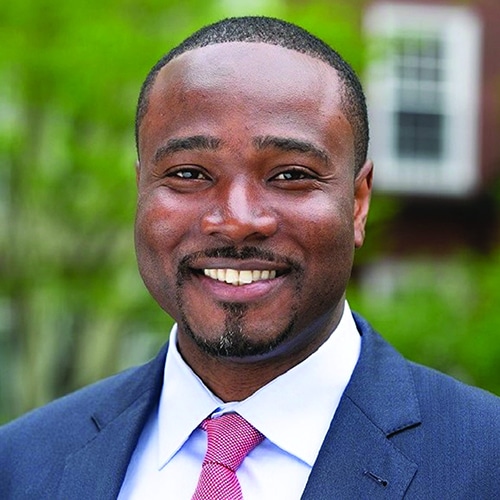In the early 1850s, Isaac Singer was often shown the door the moment he brought up his idea to make sewing machines accessible to average Americans. There was just no way it would work, many investors reasoned. Sewing machines were expensive products reserved for highly skilled professionals. Making it affordable for average people seemed impossible.
Singer’s experience isn’t unique. Virtually all market-creating innovators are told what they’re trying to do is impossible before they do it. Yet they persevere, build, and ultimately create new markets that make the world a better place. Singer created a new market for sewing machines that made clothing affordable for millions of people across the world.
So, to get a better sense for how market-creating innovators do the “impossible”–create new markets–we piloted a webinar called The Impossible Series: Stories of Market Creation.
The Impossible Series is dedicated to telling the incredible stories of innovators who have defied all odds to create new markets that have had a significant impact on society.
Our first three guests are creating new markets for recyclable waste, healthcare, and insurance products and services in Africa, South America, and Asia.
Here are nine insights we learned about creating new markets.
Bilikiss Adebiyi-Abiola, Wecyclers
Creating a market for recyclables, Wecyclers gives households a chance to generate value from their waste and provide a reliable supply of raw material to the local recycling industry.
- Invest in partnerships: The business model of Wecyclers impacts local and state governments, small and large companies, citizens, and the environment. As a result, forming partnerships with each stakeholder was important for the organization to succeed.
- Develop empathy for your customers: When she started Wecylcers, Bilikiss didn’t understand the “job to be done” of her customers. It wasn’t until she put herself in the shoes of her customers and observed what they were really struggling with that she began to understand what they wanted. This radically impacted the Wecyclers business model.
- Raise awareness about your new solution: Don’t assume people know about your organization and the value you’re creating. Wecyclers introduced a novel business model to the recycling market in Nigeria. As a result the organization needed to invest in educating the different stakeholders about the benefits of both recycling and the new model.
Richard Leftley, Micro Insurance Co.
Creating a market for affordable insurance, the Micro Insurance Company has developed an innovative business model that bundles insurance products with products customers might already use, such as microloans and mobile minutes (phone credit).
- Cost isn’t always the main barrier: Understand the real barriers that prevent your innovation from being adopted. Cost is often seen as the most important barrier but that’s not necessarily the case. By simplifying their product, radically removing friction, and paying claims quickly, Micro Insurance Company was able to increase adoption significantly.
- Some solutions require partnerships to scale: When the cost of your product or service is lower than the cost of distribution, then partnerships are key. In the case of Micro Insurance Co, many of its products cost between three cents and one dollar. As a result, the organization adopted a partnership distribution and sales model that targeted millions of people at a time and not individual customers.
- Understand the Job to Be Done: When developing partnerships with a myriad of stakeholders–microfinance institutions, mobile telecommunications companies, ride-hailing organizations, and so on–Leftley had to understand how his organization’s microinsurance product helped them accomplish their Job to Be Done–not his.
Thomaz Srougi, Dr. Consulta
Creating a market for affordable healthcare, Dr. Consulta provides quality healthcare at an affordable cost to millions of people in Brazil.
- The value of ignorance in innovation: Ignorance can sometimes be an advantage when it comes to innovation and market creation because the “ignorant” entrepreneur is not anchored to the way things are done in a particular sector. By not being a healthcare professional, Thomaz was able to focus solely on the problem, think like a user–or a patient–and then design a healthcare system that works for those who are sick.
- To create a new market, you must integrate: In order to create a new market, control costs, and maintain a high quality of service, innovators sometimes have to engage in activities that are seen as non-core to their operations. Dr. Consulta has invested in lab and diagnostics services and recently integrated an insurance company to its operations. The theory that guides this strategic decision is called Modularity Theory.
- Be patient for growth but impatient for profits: Thomaz and his team spent the first two years building and refining the model for Dr. Consulta. By leveraging technology to improve operational efficiencies, predict the likelihood of illness, and forecast patient demand and staffing needs, the organization was able to keep costs down and achieve profitability even when many of its peers were going out of business.
The work of market-creating innovators is essential to creating prosperity globally. Our hope is to continue to learn from them so that we can codify the process of market creation for innovators globally.



